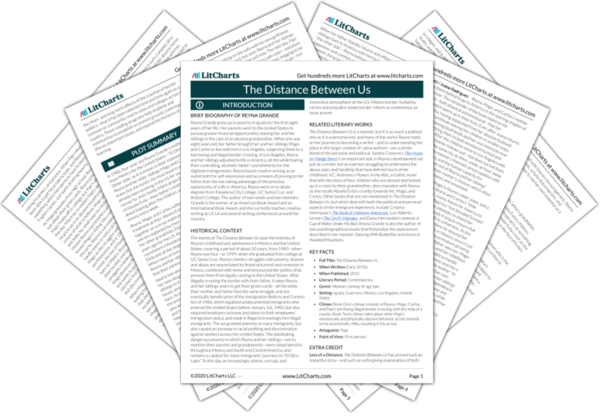AI ToolsNew
Tools to make learning and teaching easier
|
Previous
Book Two: Chapter 10
|
The Distance Between Us: Book Two: Chapter 11 Summary & Analysis |
Next
Book Two: Chapter 12
|


Upgrade to unlock the analysis and theme tracking for all of The Distance Between UsThe Distance Between Us!
Get LitCharts A+